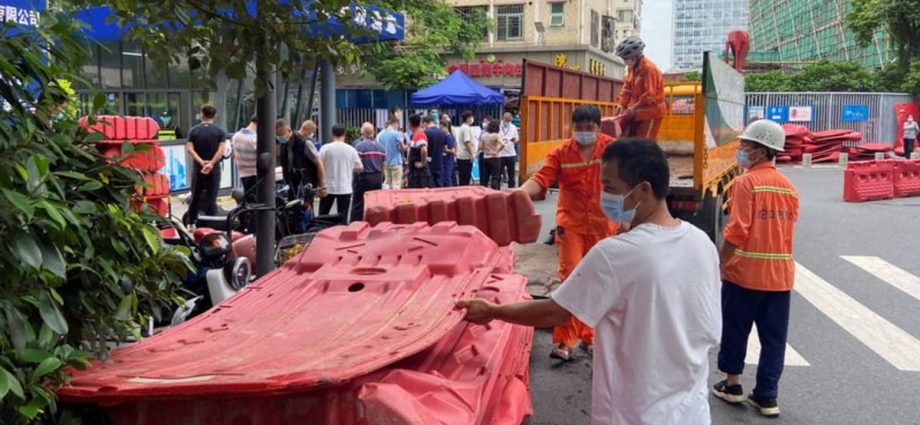
BEIJING: Parts of China’s southern city of Guangzhou imposed COVID-19 curbs on Wednesday (Aug 31), joining the tech hub of Shenzhen in battling flare-ups, but fuelling uncertainty over commerce and daily life in two of the region’s most economically vibrant metropolises.
Several of China’s biggest cities have stepped up COVID-19 restrictions this week, curtailing the activities of tens of millions of people.
Authorities looking to balance economic needs with the effort to contain every outbreak said the curbs would run for just a few days, although two northern provincial capitals extended them slightly.
China’s so-called “dynamic COVID zero” policy makes it an outlier as other countries gradually do away with curbs, despite the cost to the world’s second-largest economy, which already faces slower growth.
Capital Economics estimates 41 cities, responsible for 32 per cent of China’s gross domestic product (GDP), are grappling outbreaks – the highest number since April.
“For now, the resulting disruption appears modest, but the threat of damaging lockdowns is growing,” said Julian Evans-Pritchard, senior China economist at the consultancy.
“And even if they are avoided, we expect growth to remain subdued going forward.”
Guangzhou, a city of nearly 19 million residents near Hong Kong, reported just five locally transmitted infections for Tuesday but authorities ordered some areas in one district to halt indoor entertainment and restaurant dining until Saturday.
It also ordered most school grades in the district to delay returning for the fall semester and halt any physical sessions already begun, state media said, while bus and subway services were also scaled back.
In Shenzhen, at least four districts with about 9 million residents, have ordered closure of entertainment and cultural businesses and halted or reduced restaurant dining for a few days.
The city’s district of Yantian locked down until Sunday a few narrower areas, limiting household shopping trips to just one person every two days, and suspending businesses, although allowing restricted operations by firms in essential sectors.
Shenzhen’s education authorities postponed the start of the new semester of offline classes for most school grades.
The combined economic output of Shenzhen and Guangzhou reached 5.89 trillion yuan (US$855 billion) last year, or about half the GDP of South Korea.

